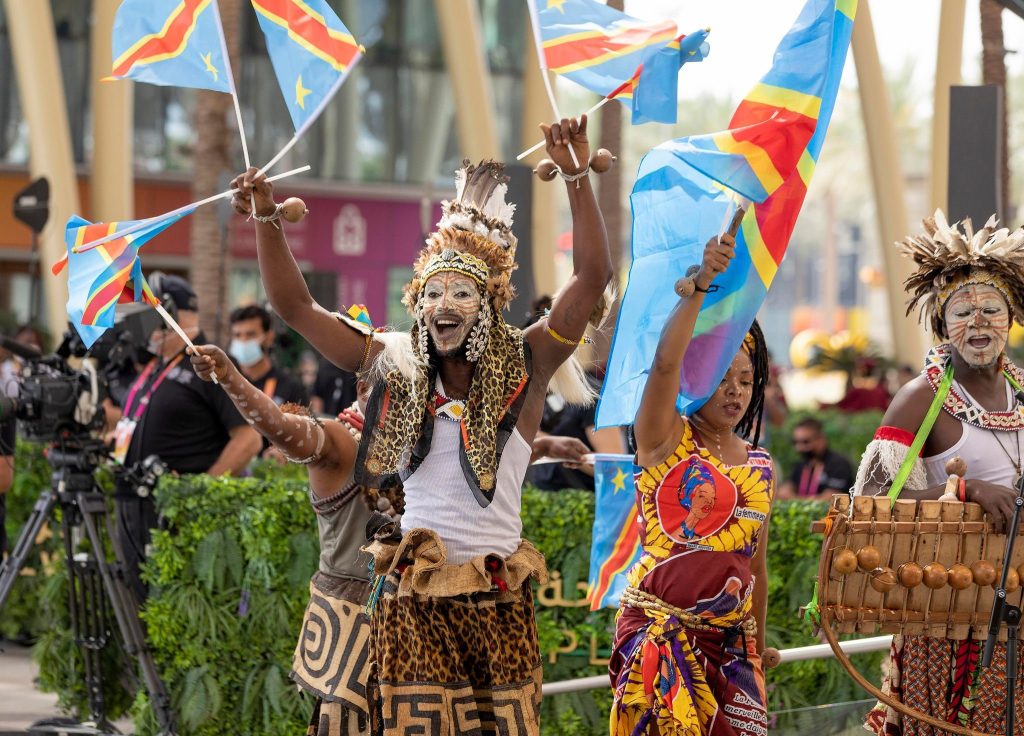Central Africa is one of the African regions that is known to house a great variety of indigenous ethnic groups that uphold different cultural practices and beliefs. One of these ethnic groups is the Pygmy community, the oldest indigenous community in Central Africa and the entire African continent. This community continues to be an attraction for various researchers from across the globe because of their ability to preserve their cultural beliefs and practices over a very long period. Let’s dive deeper into the Pygmy traditions and culture to get a better sense of who they are.
The African Pygmy Community
The word ‘Pygmy’ refers to a community whose average adult height is 4’11” or less. The African Pygmy community is believed to have descended from a group of late Stone Age hunters and gatherers living in the central African rainforest. This community is scattered across approximately 14 African countries but a majority of them (about 984,000) reside in Central African countries. The Pygymy Community is known to practice hunting and gathering as it resides in the rainforest located in the Congo basin.
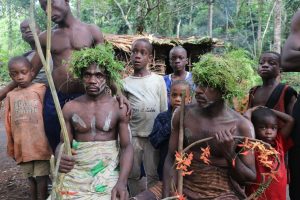
A Community of Pygmies (https://www.dailysabah.com/)
The Pygymies are divided into four main groups: the Bambuti, Baka, Aka, and Twa.
- The Bambuti/Mbuti: This is one of the smallest Pygmy sub-tribes that resides in the Ituri Forest in the eastern regions of the Democratic Republic of Congo (DRC). They are mainly hunters and gatherers.
- The Baka/Baaka: This is the largest Pygymy sub-tribe that is primarily located in Cameroon, the DRC, and Gabon. They practice a mixed lifestyle including hunting, gathering, fishing, and even subsistence farming.
- The Aka: This is another small Pygmy sub-tribe that is located in the Central African Republic and the DRC. They are primarily hunters and gatherers.
- The Twa/Batwa: This is another small Pygmy sub-tribe that is located in Uganda, Rwanda, Tanzania, Zambia, Burundi, the DRC, Namibia, and Angola. They may be the most widespread group but are the most marginalized one. The Twa are also hunters and gatherers but their marginalization has forced them to adopt new lifestyles as potters and laborers on farms.
Pygmy Cultural Beliefs and Practices
1. Music and Dance
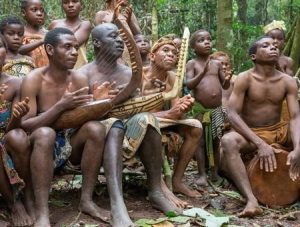
The Pygmy Community Playing Music (http://www.101lasttribes.com/tribes/baka2.html)
One of the most important parts of the Pygmy cultural practices is music and dance. The members of this community have perfected a form of polyphonic vocalization that is practiced by all members of the community. Singing and dancing are part of significant milestones made by the community such as a successful hunt, the marking of a new settlement, and funerals. The Pygmies use musical instruments, such as the likembe (thump piano), enzeko (drum), geedale-bagongo (a traditional harp), and mbela (a single-string bow), to accompany their singing.
2. Spirituality
Pygmies acknowledge that they are spiritually linked to the forest since they believe that it is their god. When maneuvering the forest, the members of this community do so in a very respectful manner. Any member of their community who harms any form of life in the forest is considered evil and is cursed. Therefore, the Pygmies aim to take only what they need to sustain themselves. The beginning of every hunt must be marked by a ceremony where members of the community sing and dance to invoke the spirits so they can have a succesful hunt. Whenever a hunt is not going as well as expected, the hunters perform a ceremony that is believed to chase bad spirits away and improve their luck.
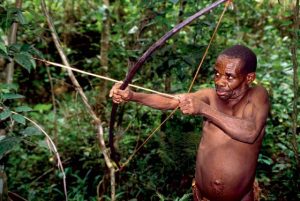
Pygmies Hunting in the Forest (https://www.modernghana.com/news/936305/african-pygmies-the-isolated-neighbours.html)
3. Storytelling
Apart from singing, dance, and spiritual beliefs, the Pygmy community also practices storytelling. This is a way that traditional beliefs and mythologies are passed on from one generation to another. It is how the Pygmies have managed to preserve their cultural beliefs and practices over the years.
The Traditional Pygmy Lifestyle
One of the crucial components of the Pygmy lifestyle is hunting and gathering. For generations, this community has hunted and gathered its food from the forest. They use bows, arrows, and traps to hunt and baskets to gather. Traditionally, men are tasked with the role of hunting animals while women gather fruits, roots, and bark for both food and medicinal purposes. Modern influences have caused Pygmy communities to adopt modern practices such as subsistence farming which are influenced by other communities such as the Bantus.
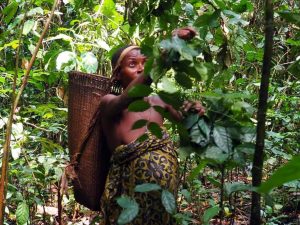
A Pgymy Woman Gathering Fruits (https://kumakonda.com/pygmies-baaka/)
The Pygmy community is known to lead nomadic lifestyles. They often relocate to more fruitful and abundant parts of the forest depending on the seasons and abundance of resources in the forest. Once they settle in a new area, the Pygmies often hold ceremonies to mark the start of a new life at their new home. Their housing structures are usually temporary since they relocate often. These housing structures are usually traditional hut structures that are covered with leaves.
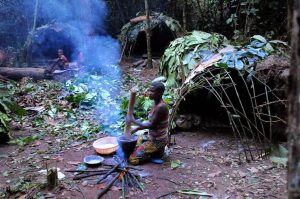
A Traditional Pygmy Settlement (https://en.wikipedia.org/wiki/Pygmy_peoples)
Modern Threats to the Existence of the Central African Pygmy Community
The Pygmies are known to reside in and make a livelihood from the Central African rainforests. However, heightened levels of deforestation and encroachment threaten the integrity of this community. More logging, mining, and agricultural activities continue taking place in the Central African rainforest, driving the Pygmy communities from their natural habitat. To add salt to injury, climate change caused by other human economic activities continues to threaten the integrity of the forests, which are the primary source of livelihood and the habitat of the Pygmy community.
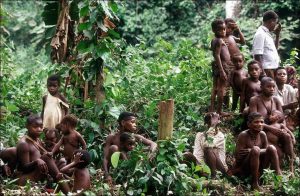
A Pygmy Community Residing in the Central African Rainforest (https://www.kaltimber.com/blog/2019/6/3/pygmies-the-real-forest-inhabitants).
Today, Pygmy communities face a lot of discrimination and marginalization in various countries. Failure to be acknowledged as an indigenous community with rights same as other communities that have embraced modern ways of living threatens the continuous existence of this tribe.
Preserving the Pygmy Community
Various non-governmental organizations (NGOs) have partnered with governments of Central African countries where Pygmy communities are found to protect the integrity of this community. These NGOs are also working towards advocating for the Pygmy’s land rights and preventing the exploitation of this community by other parties. Eco-tourism is also being promoted by these governments to help conserve the environment and the integrity of the rainforests which are the livelihoods of the Pygmies.
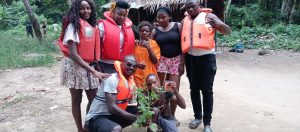
Ecotourism in the Pygmy Communities (https://www.unwto.org/ar/node/12273).
The Pygmy community is one of the African communities with the richest cultural beliefs and practices in the modern-day world. They have managed to pass on their traditions and practices from one generation to another for years. Today, they continue to practice their hunting and gathering practices in the Central African rainforest, which is their source of livelihood. When planning to visit and experience the Pygmy way of life, tourists must remember to engage ethnically with these communities. They must also promote local initiatives and practice sustainable tourism to preserve the natural habitat of the Pygmy people.
References
Alonso, A. (2020). Baaka Pygmies, forest inhabitants of Central Africa – 4/4: Pygmy peoples of Africa. https://kumakonda.com/pygmies-baaka/
Hadithi Africa. (n.d.).African Pygmies: The World’s Shortest Tribe. https://hadithi.africa/african-pygmies-the-worlds-shortest-tribe/
Lewis, J. (2014). ‘BaYaka Pygmy multi-modal and mimetic communication traditions’, in Daniel Dor, Chris Knight, and Jerome Lewis (eds), The Social Origins of Language, Oxford Studies in the Evolution of Language. Oxford Academic. https://doi.org/10.1093/acprof:oso/9780199665327.003.0007.
The Guardian. (2016). Life for the Baka Pygmies of Central African Republic. https://www.theguardian.com/global-development/2016/may/04/life-for-the-baka-pygmies-of-central-african-republic
UNESCO(United Nations Educational, Scientific and Cultural Organization): Intangible Cultural Heritage. (2008). Polyphonic singing of the Aka Pygmies of Central Africa. https://ich.unesco.org/en/RL/polyphonic-singing-of-the-aka-pygmies-of-central-africa-00082
UNESCO: Video & Sound Collections. Oral Traditions of the Pygmies Aka. (2008). https://www.unesco.org/archives/multimedia/document-3750

